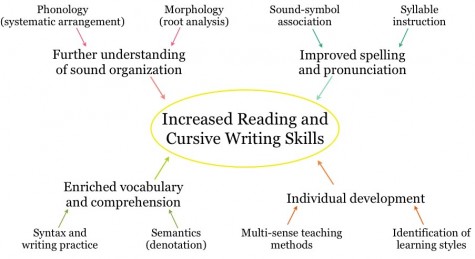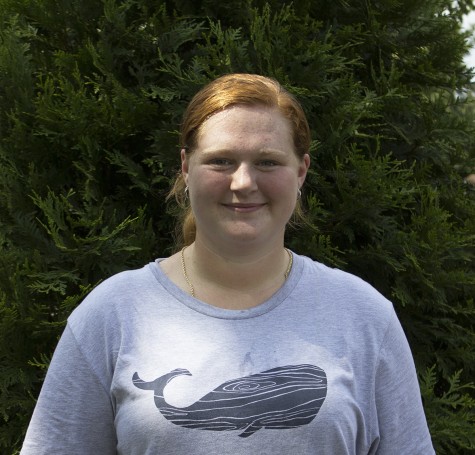Ella Stone Pursues a New Course But as an Instructor
January 5, 2016
“Hey guys let’s stop talking and getting out of our seats because some people are trying to trace their p’s . . . Now let’s use our brain fingers,” calls the voice of Ella Stone from a classroom in downstairs Hooper. While descriptors of the history of the English language and mathematics terms are normally heard down the tile halls, the student-turned-teacher voice of Stone, coaching her younger pupils in cursive script, is a new edition to the building. Begun by Stone during the second term of the fall semester, the unusual MSMS-based class is a course geared towards improving the cursive handwriting and spelling skills of dyslexic elementary students.
Three days a week from 4:10 to 5:10, Stone works with six students from a Columbus-area school, guiding them through letter pronunciation, usage, and writing in accordance with simultaneous multi-sensory instruction.

A flow chart describing the process that Stone follows in her after hours class with the goal of improving her pupils understanding of cursive writing and the English Language overall
“It was a combination of things [that lead to the program]. I was dyslexic as a child (and I am now), but I was able to overcome it with the help of my parents,” said Stone. “My little brother and sister are also dyslexic so its very close to my heart.”
Stone decided to use her training and interest in cursive-writing instruction during her senior year at MSMS and submitted a proposal for her after-school elementary program. After over a month of waiting for approval, scheduling, and “things to get settled,” she began her new role as a “teacher” of a small class of younger students.
She also prepared for the class by recruiting her six pupils. “My mom put out a Facebook message and I made a poster. The special education teacher contacted my mother so some of her students could take the class,” said Stone.
“None of them knew how to write anything in cursive at first, but with [this program], they’re able to learn letters, the sounds they make and how they are used in words. Because all of the senses are incorporated, they don’t forget the material,” said Stone.
While introducing her pupils to the foreign system of learning, Stone is also facing the learning curve of being a teacher. “It’s a lot of work, but the results are absolutely worth it. Even in just these four week, they’ve come leaps and bounds,” she said. Through her self-named “program/class,” Stone also claims that she is learning patience.
From only four weeks of class, Stone says her students have already mastered the 11 lowercase letters while also adjusting to the flow of the after school class. Posters featuring the learned letters and key words hang from the classroom board, arranged non-alphabetically by brush stroke, encouraging the students with their previous lessons. Stone also utilizes a board constructed from PVC by her father to test the students on sounds and cursive structures.
In between a short encoding session where students work with pronunciation to further establish cursive skills and a brief introduction to sentence writing using three letter words, Stone also rewarded her students with Christmas stockings. “I’m not getting paid,” she said, “I’m just doing what I am interested in, helping.”
The class will continue meeting until May, and Stone hopes for her students to be capable of writing sentences in cursive script before the end of their sessions. Using her own skills learned from the volunteer teaching position, Stone also wants “to continue teaching children in the community during college” and pursue research in the study of dyslexia.








